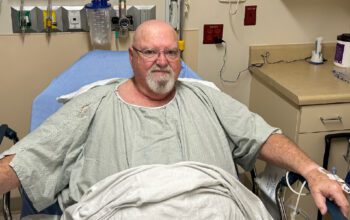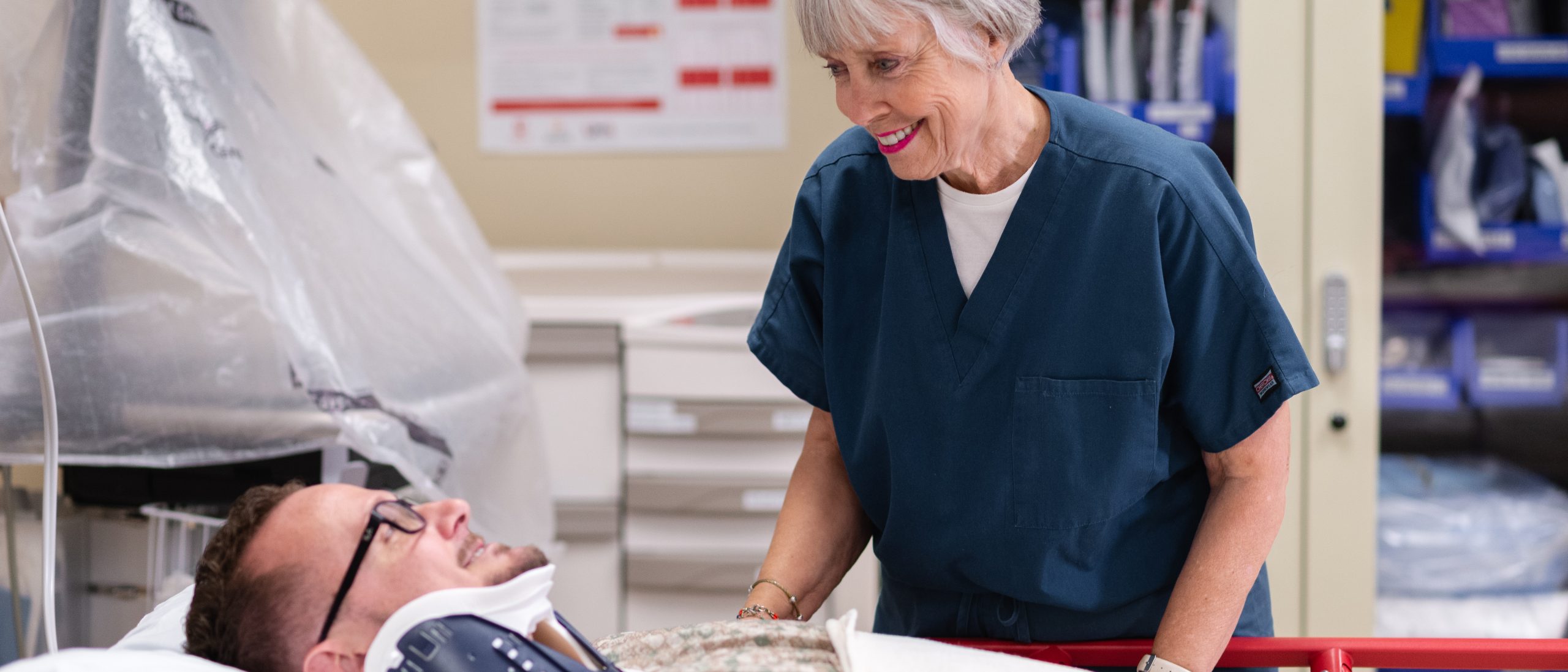Phlebotomists bring the life-saving work of the clinical lab to the bedside
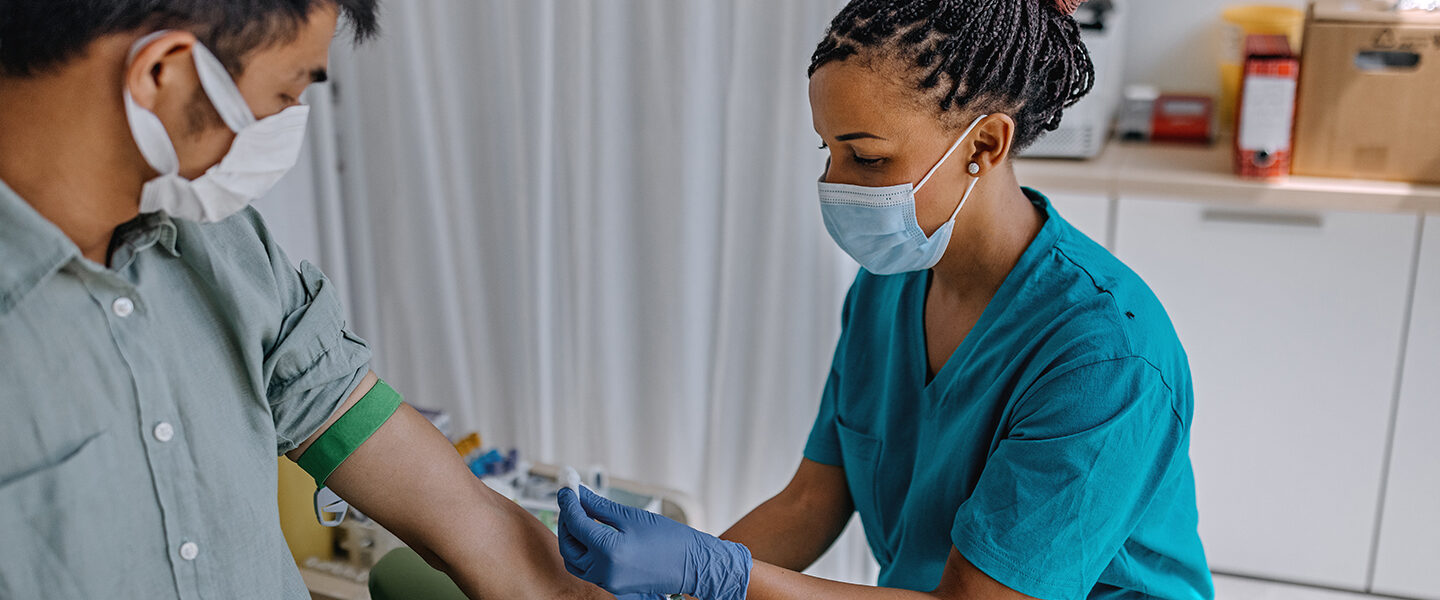
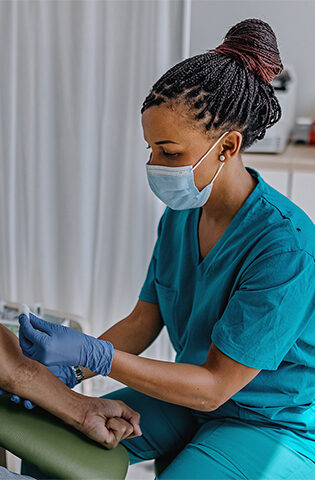
Whether in an emergency department, intensive care unit or outpatient care setting, blood samples are often the first and most critical puzzle piece when diagnosing and treating patients. HCA Healthcare’s phlebotomists are the life force behind this invaluable, life-saving role.
It is a skill, drawing blood...finding people who have both the technique to perform phlebotomy and the level of empathy to be able to interact with patients, it’s an important mix.— Joanne Trout, president of HCA Healthcare’s Laboratory Services.
HCA Healthcare’s mission to care for and improve human life is made possible by investing in the most advanced and effective capabilities and services possible. From live organ donation to rapid transport services, life-saving care takes on many forms. Yet, at its core, providing quality healthcare is made possible by the caregivers who put kindness and empathy first when caring for patients. For phlebotomists, having compassion at the bedside is as necessary as their technical training.
“It is a skill, drawing blood,” says Joanne Trout, president of HCA Healthcare’s Laboratory Services. “The results are only as good as the sample that we receive. But there is not a machine you can put on someone’s arm that’s going to painlessly obtain that sample. So, finding people who have both the technique to perform phlebotomy and the level of empathy to be able to interact with patients, it’s an important mix.”
Joanne first learned to draw blood during her early training as a medical technologist. When she joined HCA Healthcare in 1987, laboratory technologists regularly performed phlebotomy as part of their duties, especially during peak times. That first-hand experience laid the groundwork for Joanne’s understanding of what it really means for phlebotomists to be the face of the lab.
“Our diagnostic teams are doing important work,” Joanne explains. “Doctors receive the diagnostic information they need to make decisions about treatment. But diagnostic teams are also not visible to the patient. The phlebotomists represent the laboratory on the floors, interacting with doctors, nurses and, of course, the patients.” As a critical component of a patient’s care journey, phlebotomists are relied on within our facilities to deliver exceptional care and results.
Recruiting the Best
Finding and welcoming the best phlebotomists to HCA Healthcare starts with meaningful partnerships. HCA Healthcare works with local schools that offer training for both certified and non-certified phlebotomists. These training programs not only provide foundational knowledge, but also an opportunity for students to practice their skills and partner with phlebotomists in our facilities. This hand-in-hand competency process ensures trainees are acquiring phlebotomy skills, as well as an understanding of HCA Healthcare’s systems and standards of excellence.
“I remember when I used to work in the lab on the bench myself. I had phlebotomists that worked with us for two or three years while they were in nursing school,” Joanne recalls. “And then they went on to be nurses. [Lab training] really gives other caregivers a very solid foundation, because when you have people who’ve had some exposure to it, it provides them with an appreciation and an extra set of skills.”
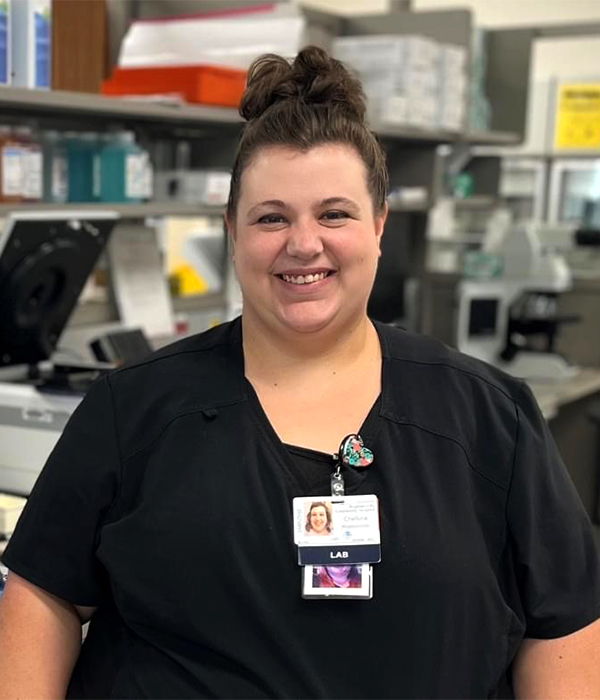
Cheltina Sanchez
Phlebotomist
Brigham City Community Hospital
Brigham City, Utah
The Path to Phlebotomy
For Cheltina Sanchez, phlebotomist at HCA Healthcare’s Brigham City Community Hospital in Utah, it was a pamphlet for one of these training programs that started her on a career path she hadn’t seen coming.
“I did cosmetology school at our local community college,” Cheltina explains. “And I knew it wasn’t what I wanted to do for a career.” Cheltina’s heart was in healthcare. “But the high school paid for it and my parents wouldn’t let me quit. ‘If you started it, you finish it.’”
That dedicated work ethic eventually paid off. Cheltina completed cosmetology school, but when it came time to pay the fees for her license, she set her sights on her true calling. “One day in class, I was looking at other pamphlets for possibilities and actually found phlebotomy,” Cheltina says. “So I used the money I had for my cosmetology license to pay for my phlebotomy class.”
I love working in the lab. I get to play a part in people’s recovery.— Cheltina Sanchez, phlebotomist at HCA Healthcare’s Brigham City Community Hospital, Utah.
Following her heart that day changed the course of Cheltina’s career, and her future. After a year working in phlebotomy at a children’s hospital, she joined HCA Healthcare at Brigham City Community Hospital, where she has worked for more than 10 years. “I love working in the lab. I get to play a part in people’s recovery.” As Cheltina says, you can’t diagnose without labs. It’s the advanced science that plays a key role in a patient’s recovery.
Drawing From Patient Relationships
HCA Healthcare’s more than 2,200 active phlebotomists collect approximately 785,000 blood draws per month. Many of our phlebotomists are also responsible for preparing those draws for diagnostic testing. This can include separating serum from plasma, monitoring sample quality and fielding inquiries. At every stage of patient care, phlebotomists are managing the samples that will ultimately provide what’s necessary for a patient’s treatment. And after more than a decade in her field, Cheltina has seen it all.
“You get to see patients through their journey,” Cheltina explains. “With cancer patients, you get to draw their blood when they’re sick, but you also get to be there when they enter remission. You get to see the moms who struggle with infertility and you draw their blood for those infertility labs, and then you get to draw their blood when they’re pregnant, and then you get to draw their blood when they have the baby.” Holding on to those relationships with her patients is what keeps Cheltina returning to the bedside. “I love that part of the job – the relationships you get to build.”
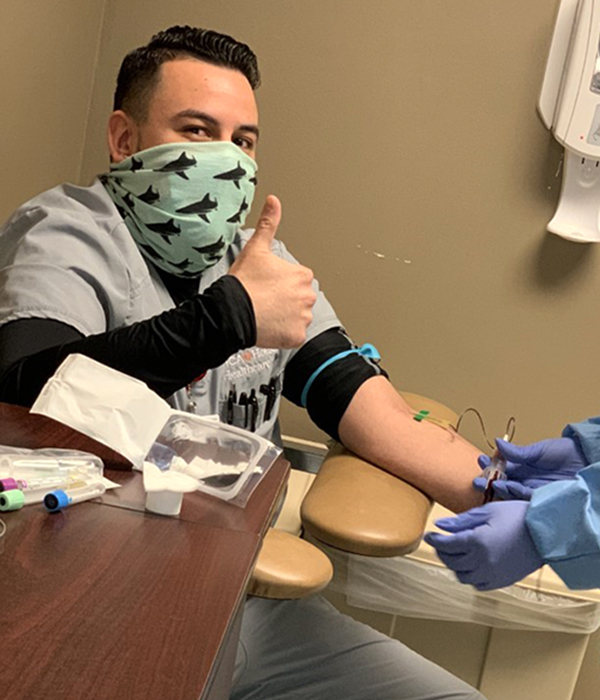
Miguel Berrondo Jr.
Phlebotomy Supervisor
HCA Houston Healthcare
Clear Lake, Texas
The breadth of a phlebotomist’s experience can be vast. At HCA Healthcare, phlebotomists draw samples in almost all patient care units, including the emergency room where blood draws are often a partnership between the labs and nursing colleagues. Varying degrees of patient acuity can also mean that some samples are more difficult to obtain than others. Miguel Berrondo Jr., phlebotomy supervisor at HCA Houston Healthcare Clear Lake in Texas, has seen first-hand the difference a positive disposition can make on a patient’s life and health, even in the most difficult of circumstances.
“Patients here at the hospital, they come here for different reasons,” Miguel explains. “It could be a trauma, it could turn out that they need a blood transfusion. I’m here to be respectful, no matter what.”
You get to see patients through their journey...I love that part of the job – the relationships you get to build.— Cheltina Sanchez
Phlebotomists are often interacting with individuals at their most vulnerable state. A patient might be woken up from their sleep to take a necessary blood draw, or they may have just arrived at the hospital and are scared or disoriented.
“I remember one patient who was a very, very difficult stick,” recalls Miguel. Not only was she physically difficult to draw blood from, but the patient was acting agitated and defensive. Miguel was committed to approaching the situation with a positive attitude and was ultimately able to draw the sample quickly. “We got the blood and her whole mood changed. Her tone, everything changed. She said, ‘Thank you so much.’ That sits with me because I made somebody’s day a little bit better, even in the difficult situation they were in.”
I genuinely love to help people...I love my coworkers. I have a very good family over here in the lab. Teamwork is a big thing over here and it matters who you work with.— Miguel Berrondo Jr., phlebotomy supervisor at HCA Houston Healthcare Clear Lake, Texas
Preparing for the Best and Worst
In any care setting, you have to be prepared for the best and the worst. Miguel has learned that the sympathy you bring makes all the difference. “In those situations, I always say a little prayer,” he says. “No one wants to be at a hospital. That’s why we’re here — to help people and keep that patient experience at an all-time high.”
The work of a phlebotomist does not only take place at a hospital. Blood drives across the nation rely on phlebotomists bringing their skills out into the community. In partnership with the American Red Cross, HCA Healthcare hosts corporate blood drives multiple times a year. According to the Red Cross, someone in the U.S. needs blood every two seconds. Whether the individual is voluntary, as in the case of a blood drive, or a patient is at one of our care facilities, drawing blood requires both competence and compassion.
After his years of training and clinical experience, Miguel is proud of his phlebotomy skills and it brings him joy to draw from patients as painlessly as possible. Some have even asked for Miguel by name when they need another blood draw.
One of HCA Healthcare’s core values – treating all those we serve with compassion and respect – is a foundation that phlebotomists like Miguel and Cheltina rely on during difficult times. “I’m able to put myself in other people’s shoes and imagine how I would feel,” Cheltina explains.
“I genuinely love to help people,” says Miguel. “I love my coworkers. I have a very good family over here in the lab. Teamwork is a big thing over here and it matters who you work with.”
